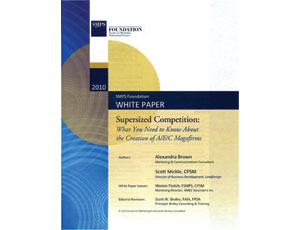Two authors presenting research about megafirms couldn’t have asked for a better example. Megafirm AECOM had just announced the acquisition of construction manager Tishman Construction. The authors identified key trends in the creation of megafirms. One of those trends—"stuck in the middle and short on cash"—describes some big, successful firms.
Their research paper, “Supersized Competition: What You Need To Know About the Creation of A/E/C Megafirms,” was discussed on July 15 at the Society for Marketing Professional Services conference in Boston and funded by the SMPS Foundation. It can be found at http://www.smps.org/foundresearch.
Authors Alexandra Brown, a marketing consultant, and Scott Mickle, director of business development for LandDesign, Charlotte, N.C., could not find a definition of “megafirm,” so they had to write one. Megafirms have “at least $1 billion in annual revenue, span multiple disciplines (e.g., engineering and architecture or construction and engineering) and operate internationally,” the report states.
Demand drivers include globalization, vendor consolidation and owners pushing for single-source delivery. “But the desire and means to buy is only half the story. Firms with the desired qualities need to be willing to sell,” the authors say. Supply-side drivers include cash shortages and ownership transitions.
At some point, a firm finds itself in what interview subjects call a “zone of inefficiency,” the indicators of which include low profit margins and low internal growth. Owners looking to grow decide to “hitch their wagon to a firm that already has the infrastructure in place,” potentially making an existing megafirm grow larger.


Post a comment to this article
Report Abusive Comment